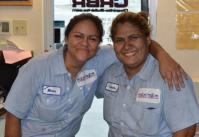About CRBR - Cleanrite Buildrite


Since 1959, CRBR - Cleanrite Buildrite has been providing emergency disaster restoration and cleaning services for property owners, insurance providers, municipalities, hospitals, schools and more! CRBR is locally owned and proud to be a resource for the communities in which we serve.
Certified - Licensed - Bonded
CLEANING & MITIGATION
RECONSTRUCTION
Specialty SERVICES
CA License #689238 NV License #0079557
CLEANING & MITIGATION
Full-Service Residential & Commercial
24/7 Emergency Response*
- Emergency Water & Sewage Extraction* Large-scale & Small-scale Drying*
- Mold Remediation, Containment & Removal Dehumidification
- Smoke & Soot Removal
- Contents Cleaning & Storage
- Secure Bar Code Scanning Process for Contents Carpet, Upholstery, Rug & Tile Cleaning
- Air Duct/ HVAC Cleaning
- Exterior Power Washing
- General Cleaning
- Deodorization Process
- Ozone Treatments
- Dry Ice Blasting
RECONSTRUCTION
Full-service Residential & Commercial
24/7 Emergency Response*
- Water, Fire, & Wind Damage*
- Fallen Tree Damage*
- Emergency Roof Tarp-offs*
- Board-up and Temp. Fencing to Secure Property* Reconstruction & Complete Restoration
- Construction & Project Management
- Customized Estimating & Scheduling
- Structural Damage
- Debris Removal
- Vandalism Repairs
- Electrical & Plumbing
- Framing, Drywall & Finish Carpentry
- Interior & Exterior Painting
- Masonry & Concrete
- Tile & Floor Coverings
- Roofing & Repairs
- Upgrades - Remodels & Additions
- All Types of Fencing
- Certified, Licensed, Bonded & Insured General Contractor
SPECIALTY SERVICES
Full-service Residential & Commercial
24/7 Emergency Response*
- Crime Scene & Biohazard Clean-up*
- Trauma Scene Clean-up*
- Disinfection Services
- (Bacteria Decontamination & Infectious Disease Control) Home Modifications (ADA) Accessibility
- Hoarding Clean-up
- Encampment Clean-up
CRBR strictly adheres to all industry standards.
IICRC Certified in multiple categories such as; Lead Renovation, Water Damage Restoration, Bloodborne Pathogens, Trauma Scene Clean-up.
